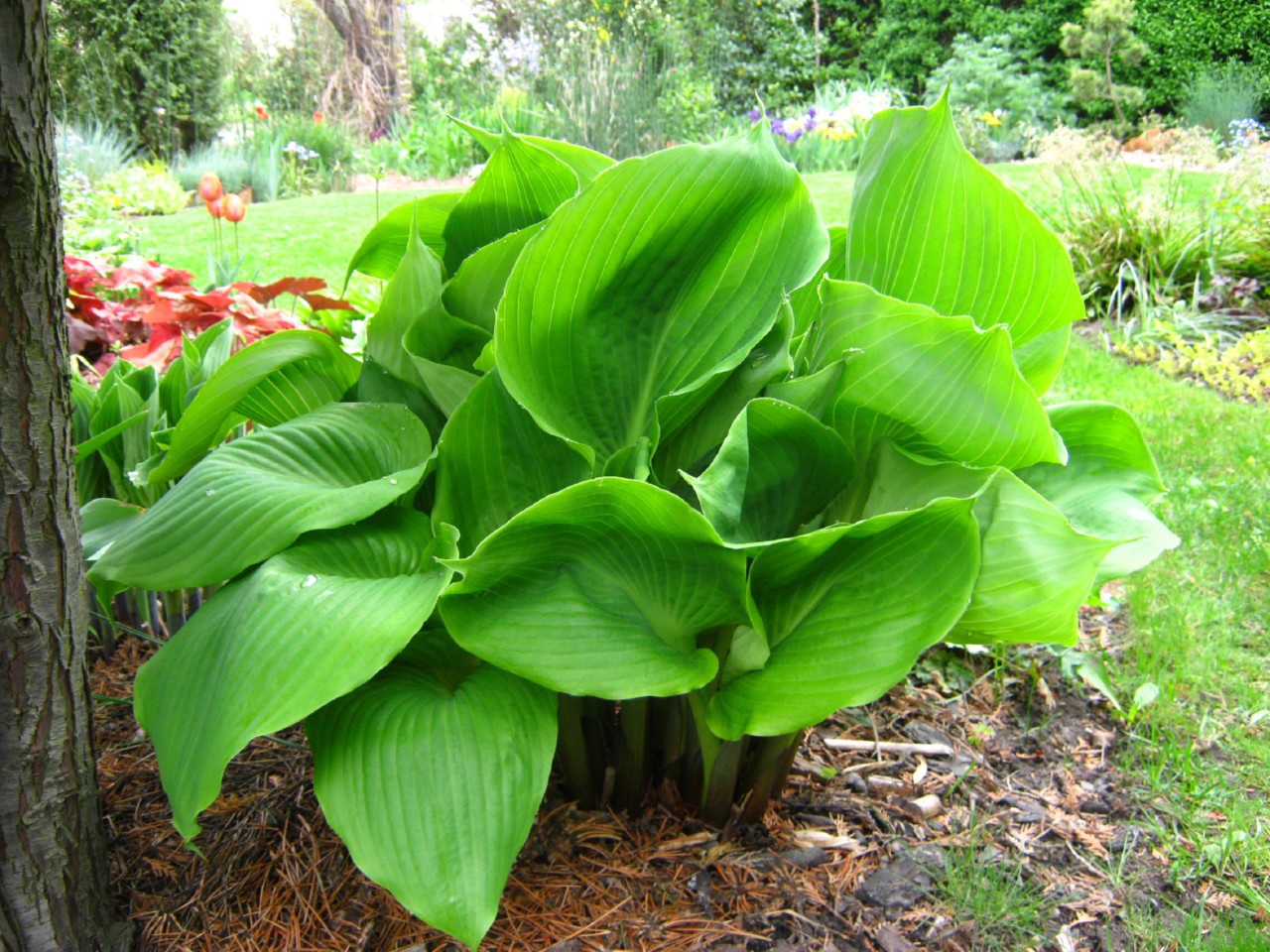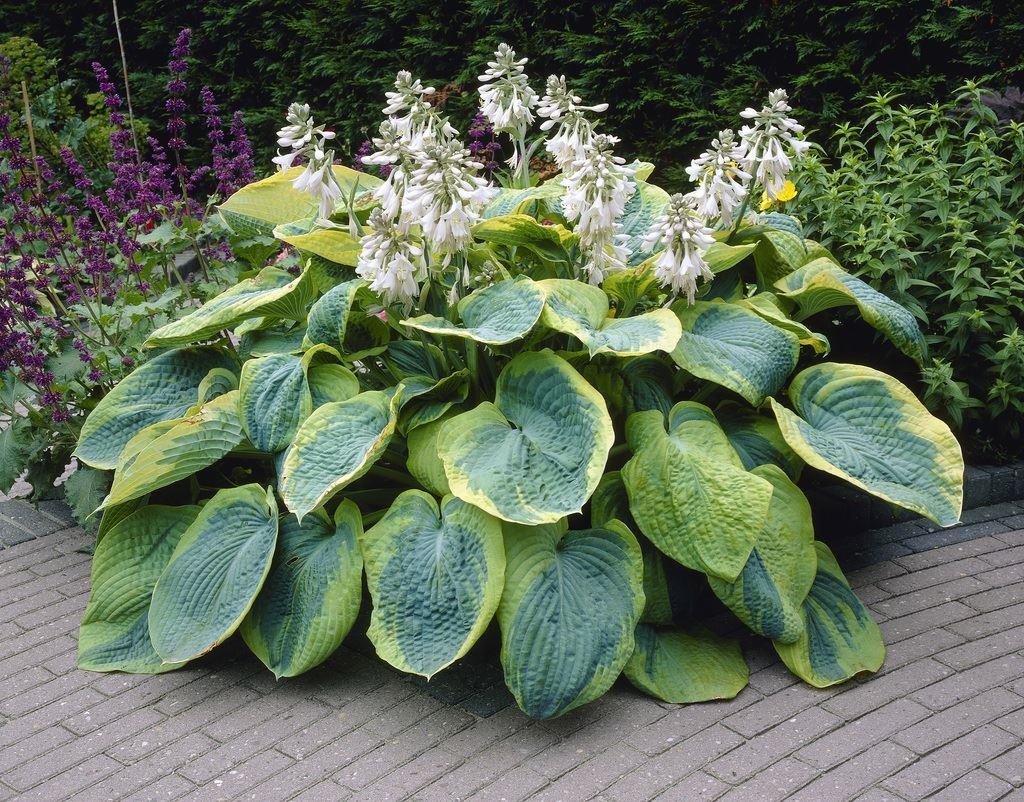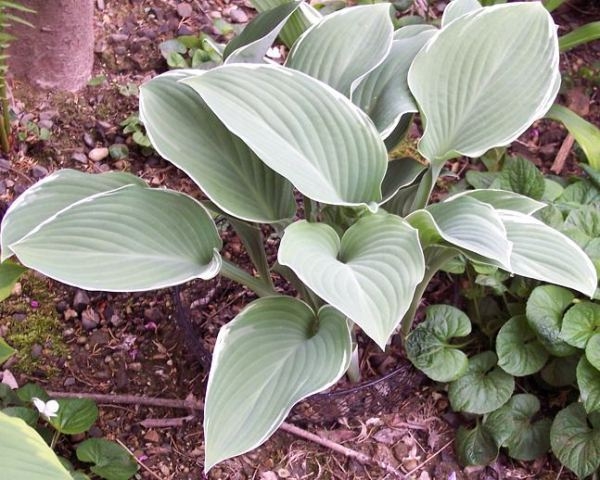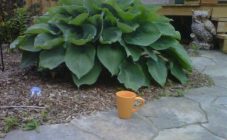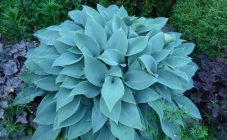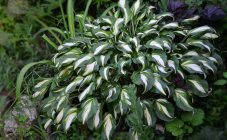A perennial herb hosta (another name - funkia), belonging to the Asparagus family, has been gaining increasing popularity among gardeners, florists and collectors in recent years. Any more or less well-groomed garden or suburban area simply must be decorated with this large or small bush with original large leaves. A distinctive feature of the hosts is a huge selection of varieties and varieties (over 2.5 thousand), which is constantly increasing, thanks to the efforts of breeders.
Popular varieties of giant host
Hosts differ, first of all, in the size and height of the bush: from very miniature dwarfs to simply large and very large hosts. Large representatives of this plant grow in height from 0.55 to 0.7 meters. There is a kind of host of real giants, they are able to reach one and a half meters in height and occupy an area of 2 square meters, therefore, a large area should be provided for their cultivation even at the stage of planting young plants.
Giant hosts are designated with the letter G and are used not only to decorate the site, but also to correct the exterior of its unfortunate places. This plant is a tapeworm, i.e. it acts as a single bright and unusual accent on the lawn, in the garden or on the site. The most popular species are known to collectors and florists. large, tall and giant host:
- Sam and Substens is a plant of class XL, a classic yellow hosta, reaches a height of one meter and more, round wavy and wide dense leaves are simply huge (0.4 by 0.38 m), have a golden color (the so-called chartreuse color); flowers are produced in the middle of summer and are painted in a pale lavender color; the plant never has problems with insect pests (sometimes slugs annoy);
- Empress Wu - are the tallest representatives of the family, the height of the largest hosts of this variety can reach up to one and a half meters, the leaves are large (0.5 to 0.4 m) and elongated, sinewy, located with a cap, have a bluish "wax" tint in the spring, by autumn, it turns into dark green, blooms with light lavender flowers for a long time;
- Frans Williams - giants of the variety have been popular for several decades, their height is up to 0.8 meters, the leaves are blue-green and bowl-shaped;
- Blue Ambrellaz - the name of the plant reflects the color of the foliage: it has a blue tint and grows in a cascade, has the shape of umbrellas on high legs, the bush reaches 0.75 m in height, in girth - one meter;
- Aisi Halo - strikes with the original color of the foliage: it is gray with green, there is a white border around the edges, the plant stretches up to 90 centimeters, having a diameter of almost 2 meters;
- Blue Mammoth - large hosts of this variety have voluminous blue leaves in the form of a wide oval with a bluish tint of blue color; blooms, unlike relatives, very original: white bells on tall flowering shoots;
- Jade Cascade - the giant hosta of this variety stands out from the rest for the original arrangement of foliage, which resembles a cascading fountain, each huge leaf of this plant, up to 1.1 meters high and 1.5 m in diameter, has deep transverse veins and a "wave" along the edges;
- Dino - this kind of hosta is so tall that it really resembles a dinosaur: it grows up to 1.8 meters in diameter and up to 1.2 meters in height; leaves are roundish, dense green, sinewy, have a border;
- Thunderbolt is a rather large hosta species with very dense leaves, original, which are covered with yellowish (whiten in the cold season) spots;
- Hosta named Behemoth (Latin Behemoth) is one of the tallest representatives of its species: almost a meter in height and 1.2 in girth, leaves are powerful, shiny, light green, wavy edges;
- Tom Schmitt is a tall hosta variety, shaped like an exotic vase, 0.8 m high and 1.2 m in girth, leaves with an area of 29 by 19 centimeters have a gray-blue tint, along the edges there are white borders.
Agricultural principles
This type of garden plant is gaining popularity also because it does not require special care. Hosta does not need complex pruning, separation of bushes, dressing with pesticides, shelter for the winter. Decorative functions have lived in one place for more than a dozen years.
The host is also undemanding to the type and quality of the soil, as well as to the level of illumination and moisture, it is sometimes called the "queen of the shade". However, in order to discover the true splendor of a given plant, it needs some care and choosing the most suitable place for growth.
Hostas reproduce mainly by cuttings, as well as stem cuttings with buds. Where to plant a new bush depends on the color of the leaves:
- Planting varieties with dark green leaves is carried out in shaded areas (possibly under fruit trees), such hosts feel great even in the twilight, besides, with white flowers on high peduncles, they seem to "highlight" the garden space;
- If the leaves of the funkia have stripes of yellow, lemon and light green shades, it is better for them to be in the sunlight (in the heat they need to be shaded);
- Blue-leaved hosts must also grow in lighted areas, otherwise their gorgeous bluish hue will turn green (if shaded more than 4 hours every day).
If the garden is still young, and there is little shade in it, then the hosta can be attached near tall perennials from the west or north, which will protect the bushes from direct sunlight. A giant host will not work in this case.
In order for the hosta to form a huge succulent bush, it is advisable to feed it with organic matter: humus and composted mixture. Mulching is also recommended in the spring with organic compounds: grass and processed sawdust.
Hosts tend to resist disease and insect pests well, but slugs are eager to feast on the luscious green foliage of these perennials. Metaldehyde preparations are sprinkled on the ground against them.
Variety of choice
The genus host amazes with a variety of species - there are more than 4 dozen of them, varieties - in general, over 2.5 thousand. This ornamental plant can be of different colors and shades: from green and light green to blue, yellow and white, various spots and stripes on the leaf plate are also possible. Hosts also vary in height - from mini-bushes to giants; leaf shape - elongated, lanceolate, rounded; as well as by the texture of the sheet plate - matte-smooth, wavy or waffle.
